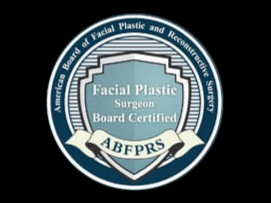SCHEDULE YOUR CONSULTATION TODAY | CALL NOW
Hair Restoration: Regain your Confidence with Natural Hair Growth
Hair loss can have a significant impact on self-esteem and quality of life. Fortunately, advancements in hair restoration techniques have provided practical solutions for those struggling with thinning hair or baldness. In this article, we’ll explore the world of hair restoration, the different treatment options available, and what you can expect from the process.
What Is Hair Restoration?
Hair restoration refers to a variety of surgical and non-surgical treatments designed to combat hair loss and promote healthy hair regrowth. It is most commonly used to address male-pattern baldness, female hair thinning, and other hair loss conditions caused by genetics, medical conditions, or lifestyle factors.
One of the most popular methods is hair transplant surgery, which involves moving hair follicles from a donor area (usually the back of the scalp) to areas experiencing thinning or baldness. This process ensures that the restored hair looks natural and continues to grow over time.
Causes of Hair Loss
Understanding the causes of hair loss can help determine the best
hair restoration approach.
Here are some of the common triggers:
- Genetics: Male and female pattern baldness are hereditary conditions.
- Hormonal Changes: Conditions like pregnancy, menopause, and thyroid issues can affect hair growth.
- Medical Conditions: Autoimmune diseases, viral illnesses (e.g. COVID), scalp infections, and nutritional deficiencies can lead to hair loss.
- Medications and Treatments: Chemotherapy and certain medications may cause temporary or permanent hair loss.
- Stress and Lifestyle: Stress, poor nutrition, and unhealthy habits like smoking can affect hair health.
Types of Hair Restoration Treatments
There are several hair restoration treatments available to suit different needs and conditions.
Below are the most common options:
1. Hair Transplant Surgery (FUT & FUE)
- Follicular Unit Transplantation (FUT): A strip of scalp is removed from the donor area, and individual follicular units are transplanted into the recipient area. This is an ideal method for patients who wear their hair longer, as the scar is very well hidden even right after surgery.
- Follicular Unit Extraction (FUE): Hair follicles are individually extracted and implanted, leaving minimal scarring. This can be a better option for those who wear their hair very short or “buzzed” in the back.
FUT and FUE offer permanent results, and the decision between which method is best for you is determined during an in-depth consultation.
2. Platelet-Rich Plasma (PRP) or Platelet-Rich Fibrin (PRF) Therapy
PRP therapy involves injecting platelet-rich plasma, derived from the patient’s own blood, into the scalp to stimulate hair growth. This non-surgical method helps improve the health of existing follicles and promotes hair growth.
3. Medical Treatments
Medical treatments such as Propecia (Finasteride) and Rogaine (Minoxidil) can help slow hair loss and improve the health of existing hair.
4. Scalp Micropigmentation (SMP)
SMP is a cosmetic procedure that involves tattooing tiny pigment dots on the scalp to mimic the appearance of hair follicles. It’s a great option for individuals who prefer a closely-shaved look or need to conceal thinning areas.
5. Low-Level Laser Therapy (LLLT)
LLLT uses red light to stimulate hair follicles, improve circulation, and encourage hair regrowth. It is non-invasive, pain-free, and often recommended as a complementary treatment to hair transplant surgery.
The Hair Restoration Process
Each hair restoration journey begins with a personalized consultation. Dr. Ashley Guthrie, a leading expert in hair transplantation, will evaluate your hair loss, determine the best treatment plan, and guide you through every step of the process. Here’s what you can expect:
1. Consultation and Evaluation
During the initial consultation, your hair loss pattern and medical history are assessed. Dr. Guthrie will discuss treatment options, expected results, and the timeline for achieving your hair restoration goals.
2. Procedure Day
If surgery is part of your plan, FUT or FUE will be performed in a comfortable, private environment. These are performed in our state-of-the-art, in-office surgery suite. Hair technicians will be present to assist in the preparation and placement of your grafts.
3. Post-Procedure Care
After the procedure, Dr. Guthrie provides detailed aftercare instructions to ensure optimal healing. This may include medication, avoiding strenuous activities, and proper scalp hygiene.
4. Follow-Up Appointments
Regular follow-ups are essential to monitor progress and ensure the treatment is working effectively. Dr. Guthrie’s team will be available to answer any questions during your recovery and hair growth phases.
Benefits of Hair Restoration
Hair restoration offers several benefits, making it a life-changing solution for many individuals.
- Permanent Results: Hair transplants provide lasting, natural-looking outcomes.
- Improved Confidence: Restoring your hair can boost self-esteem and enhance your overall appearance.
- Minimally Invasive Techniques: Modern hair restoration procedures, like FUE, involve minimal downtime and scarring.
- Versatile Treatment Options: From transplants to PRP therapy, there’s a solution for every stage and type of hair loss.
Frequently Asked Questions (FAQs)
1. How long does it take to see results from hair restoration?
Hair transplant results typically become noticeable after 3-6 months, with full growth achieved in 12-18 months. Non-surgical options, like PRP or PRF therapy, may require several sessions to achieve optimal results.
2. Are hair transplant results permanent?
Yes, hair transplant results are permanent, as the transplanted follicles are resistant to hair loss. However, ongoing care and treatment may be needed to maintain overall hair health.
3. Is hair restoration painful?
Most hair restoration procedures are performed under local anesthesia, minimizing discomfort. Post-procedure pain is generally mild and can be managed with over-the-counter medication.
4. Am I a good candidate for hair restoration?
Ideal candidates for hair restoration are individuals with healthy donor hair and realistic expectations. A consultation with Dr. Guthrie will help determine the most suitable treatment for you.
Conclusion: Restore Your Hair, Reclaim Your Confidence
Hair restoration offers a new lease on life for those struggling with hair loss. Whether through surgical procedures like FUT and FUE, or non-invasive treatments like PRP therapy, there are effective options to help you achieve natural-looking results. Dr. Ashley Guthrie provides personalized care to guide you on your journey toward renewed confidence and lasting hair health.
If you’re ready to explore the possibilities of hair restoration, contact Dr. Ashley Guthrie today to schedule your consultation. With cutting-edge techniques and compassionate care, Dr. Guthrie’s expertise ensures you’re in the best hands throughout your hair restoration experience.
*This article is intended for informational purposes only and should not replace professional medical advice. Always consult with a healthcare professional before undergoing any medical procedure.*
Guthrie Facial Plastic Surgery | All Rights Reserved
Privacy Policy | Website by Infinity Medical Marketing






